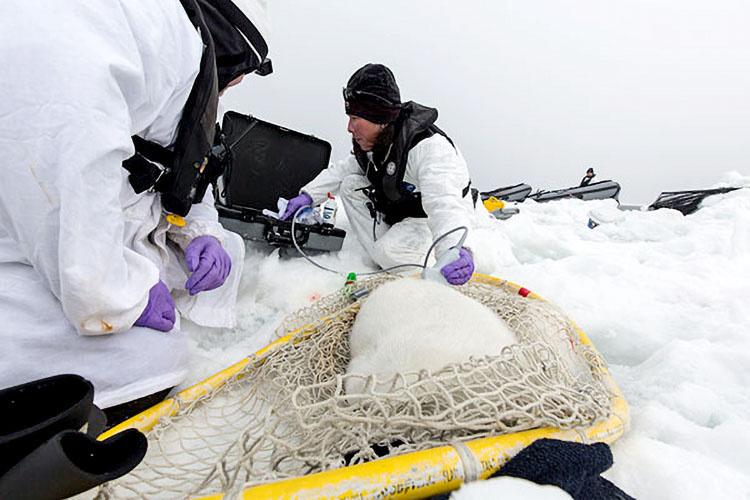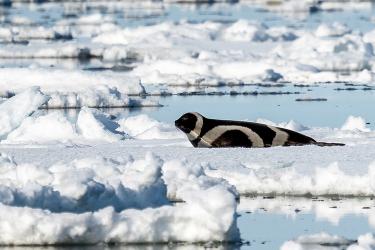
Blood sample taken from a captured seal is pipetted during the lab work.
Along with deploying satellite tags, another component of our work with ribbon and spotted seals in the Bering Sea is collecting information about their health and condition. Most of the information we have comes from animals harvested in subsistence hunts in Alaska.
The critical time when these animals are pupping and molting provides us with a great opportunity to collect more information from animals in the wild.
When we have the opportunity, we weigh and measure the length and girth (how long and round each animal is).

Serum samples from a mother (right) and pup (left) ribbon seal demonstrate the larger fat content in the pup. Seal milk has a very high fat content so the pup can grow an insulative blubber layer quickly.
We also measure blubber thickness. To do this, we use ultrasound equipment like used to examine people. Having a thick layer of blubber is important given the freezing environment of the Bering Sea.
We also collect blood samples from captured seals. When we return to the ship, we use centrifuges to spin the blood and separate different components.

All the sampling and collection instruments are stored in one case for ease and efficiency.
Blood parts (like serum and plasma) are used to look for disease and other indicators of health condition. We also look at serum and plasma for differences in seal diets. For example, moms and pups have very different diets; moms eat a variety of fish but pups only drink their mothers' milk.
How do we know this?
When we look at serum and plasma from the pup, it has a cloudy and milky appearance. The cloudy appearance is from the fatty milk and shows the pup is primarily getting nutrition from mom and not eating fish yet.
The milk has a high amount of fat in it. This helps the pup quickly grow a thick, fat blubber layer. Most pups will be on their own after only 3 or 4 weeks so they need to gain weight fast!
We also collect other biological samples to help us evaluate seal health and condition. Using our "sampling kit" we collect hair, whiskers, and scat—yes, it smells. All of these samples allow us to learn more about health as well genetics and what seals like to eat.
We are optimistic that we'll capture more seals as we move into our last week. Stay tuned for more updates on our progress.



